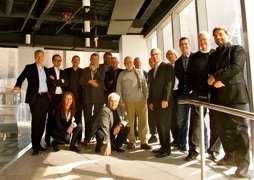The architecture world is buzzing more than a little about Gehry Technologies’ dual announcements this week that the company will be both forming a new alliance of architects with a mandate to promote new technologies in the architectural world and teaming with Autodesk to promote the company’s software solutions (basically, Revit). For those who’ve often complained about the slow pace at which the architectural community adopts new technologies and workflows, this is pretty great news. After I. M. Pei, Gehry is probably the best known architect in the world, and if he says people ought to be using BIM, along with other new technologies, I’m guessing people will listen.
Missing from any stories of the announcement, however, is a mention of 3D data capture, or, as Autodesk calls it, reality capture. Seems like there’s an opportunity here. The write-up provided by ENR.com gives some ideas for how the 3D data capture community can take advantage.
The group will meet virtually on a monthly basis and in-person annually to discuss integrating new technologies into architecture, engineering and construction. They will serve officially as an advisory board to Gehry Technologies. “The advisory board was chosen for it’s variety of backgrounds,” says Dayne Myers, CEO, Gehry Technologies. “We specifically told them they had no obligation to use our services or software in their own work. We want their input, and plan to bring non-architect experts into the board in the future.”
How do you, 3D data capture professional, get on that board? Are you frustrated by the difficulty of scan-to-BIM workflow and the way that it hasn’t been embraced the way greenfield BIM has been? Do you have ideas about how laser scanning and photogrammetry can provide valuable information to architects as they undergo retrofit and refurbishment projects? Seems like Gehry and company are saying they’d like to hear about them.
“We continue to expand and grow out, even in a down economy,” says GT’s Myers. “Frank’s vision is that the industry can dramatically improve with technology, and we are going to implement that vision.”
This makes it clear that technological innovation is being put forward as a commercial advantage, as a competitive marker. If architectural firms increasingly see technological competency, and an embrace of cutting edge workflows, as a competitive advantage, that’s an opportunity for 3D data capture folks to take them by the hand and show the efficiencies and possibilities created by capturing as-built conditions in as exact a fashion as possible. A down economy is the time to invest in new possibilities for the big firms, not a time to retrench. How does the 3D data capture marketplace reach out to architects in this environment and show them that laser scanning might be an investment work making?






